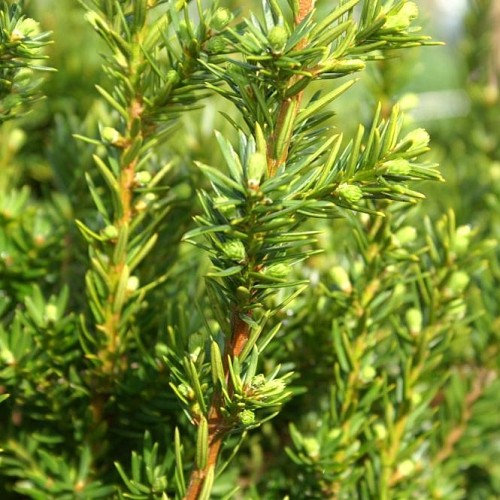
yew
Taxus media 'Gwen'
Cycle:
Perennial
Watering:
Average
Hardiness Zone:
4 - 7
Flowers:
Flowers
Sun:
Full sun,part shade
Leaf:
Yes
Growth Rate:
Low
Maintenance:
Low
Poisonous To Humans:
Yes
Poisonous To Pets:
Yes
Drought Tolerant:
Yes
Salt Tolerant:
Yes
Thorny:
Yes
Care Level:
Moderate
watering
Yew (Taxus media 'Gwen') is an evergreen conifer which requires moderate amounts of water. Plants should be watered once a week during dry weather. Make sure to water the root system of the plant thoroughly and check soil moisture weekly. If the soil is still moist after a week during dry weather, hold off on watering until the soil starts to dry out. During hot/dry periods, it is beneficial to mist the foliage of the plant every few days to help provide some supplemental moisture.
sunlight
The sun requirements for yews (Taxus media 'Gwen') are very tolerant and can adapt to a range of sun exposures from deep shade to full sun. Generally, yews prefer partial or dappled shade and thrive with a few hours of morning sun each day. They can also adapt to full sun for part of the day, but the harsh afternoon sun can cause the needles to scorch. Too much sun can damage the leaves, so afternoon shade is recommended in regions with strong, hot sunlight.
pruning
When Pruning Yew (Taxus media 'Gwen') plants, timing and pruning techniques depend on the desired result. Generally, pruning should take place in late winter or early spring, while the tree is still dormant. This is to ensure proper bud set and keep the plant healthy. Light pruning can be done on Yews throughout the growing season, but it's best to avoid severe pruning. Severe pruning should only be done in late winter/early spring - after the last hard frost, but before bud break. If you are pruning to shape the Yew, lightly thin out the branches, removing dead or weak wood. Remove no more than ¼ of the total growth; and, if possible, leave enough needles to cover the branch. Regular pruning will also improve air circulation throughout the branches. Yews can be pruned to manage size and shape, in order to keep it in bounds for a specific area. Pruning out the center of the plant may be necessary, while keeping the general shape intact. This will open the plant up and allow light to filter through the branches. It is important to prune Yew with care, as too much or too little will adversely affect the health of the plant.
